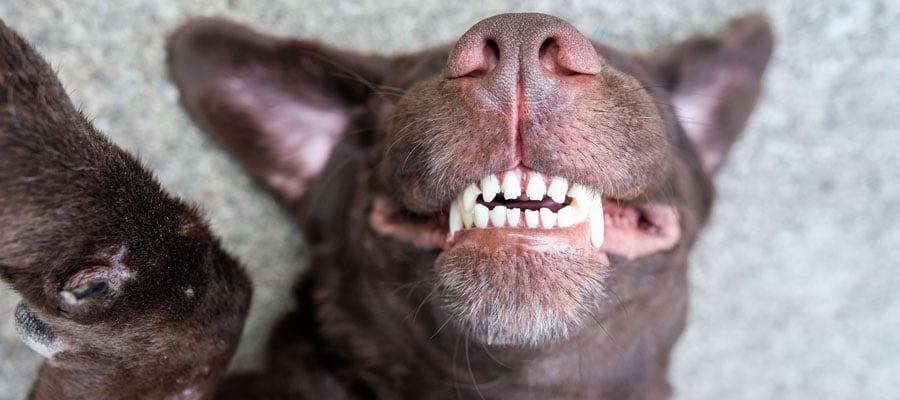One of the biggest challenges for pet owners is keeping the area where the tooth meets the gum line clean for their pets. Dental problems are often caused by plaque buildup at the gum line that then turns into tartar, and eventually causes periodontal disease. When plaque and tartar buildup occur, that is when your veterinarian needs to step in with a dental cleaning for your pet.
However, plaque starts to reattach to the teeth after a dental cleaning soon after their first meal if a home dental care routine isn’t followed afterwards. This means brushing their teeth daily, giving dental chews, and even providing a dental diet. Brushing teeth daily is the best way to fight against plaque buildup—but some dogs don’t like having their teeth brushed.
This is where a tooth sealant applied during your pet’s dental procedure can help. Here at IPH, we use SANOS®, a VCOH approved dental barrier sealant that is designed to extend the life of a dental cleaning. This type of sealant can best be described as a self-hardening liquid bandage device that helps maintain a barrier between plaque and your pet’s gumline. This sealant last lasts up to six months and can extend the time between needed dental cleanings for your dog or cat.
What is Dental Sealant?
- It acts like a liquid bandage that seals the subgingival line again the formation of plaque
- A good sealant will allow water and oxygen to pass through so the gumline can remain healthy
- It’s a clear liquid that dries quickly before you pet wakes up
- These sealants last around six months to help protect your pet’s teeth from plaque build up
It can’t be stressed enough how important a good dental health routine is for dogs and cats. Not only is this important for the short term, but for your pet’s quality and longevity of life in the long term as well. Left unchecked, periodontal disease can ultimately result in the spreading of bacteria throughout a pet’s system, possibly resulting in problems with the kidneys, liver, and heart.
While dogs and cats rarely get cavities, they are susceptible to gingivitis and periodontal disease and ultimately, the bone loss that can result. Talk to your veterinarian about your pet’s dental health and make sure to request a dental sealant at your pet’s next cleaning.
